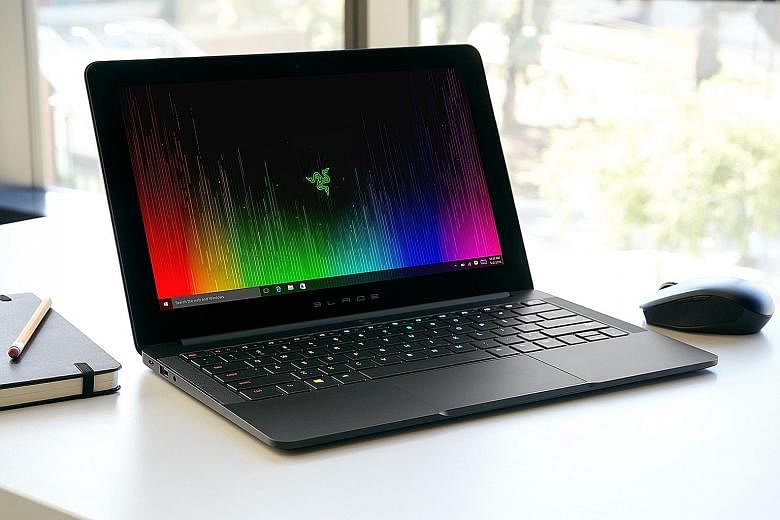If I was asked a couple of years ago to guess a new Razer product, an ultrabook would be the last item on my list.
But early last year, the gaming company surprised me with the 12.5-inch Razer Blade Stealth, a premium laptop to rival the Apple MacBook Air.
More unexpectedly, the Stealth turned out to be a very good ultrabook for a maiden effort. It was priced competitively, too.
With its sleek black aluminium chassis, the Stealth has often been compared to the MacBook Air. But, unlike Apple, which seems to have stopped improving the Air, Razer has been keeping the Stealth up to date with the latest hardware.
The newest model, launched late last year, boasts the latest Kaby Lake Intel Core i7 processor. Razer has also increased the specification of the battery from 45 watt-hour to 53.6 watt-hour. In addition, buyers can now configure the ultrabook with up to 16GB of RAM and a 1TB solid-state drive.
The laptop's performance seems to have received a slight boost from the upgrades. My review set scored 2,717 in PCMark 8 Home. The previous version managed 2,552 on the same benchmark, which tests daily computing tasks such as browsing the Web.
-
TECH SPECS
PRICE: $1,899
PROCESSOR: Intel Core i7-7500U (2.7GHz)
GRAPHICS: Intel HD Graphics 620
RAM: 16GB
SCREEN SIZE: 12.5 inches, 2,560 x 1,440 pixels
CONNECTIVITY: 2 x USB 3.0, Thunderbolt 3 (USB Type-C), HDMI, audio jack
BATTERY: 53.6 watt-hour
RATING
FEATURES: 4/5
DESIGN: 4/5
PERFORMANCE: 4/5
VALUE FOR MONEY: 3/5
BATTERY LIFE: 3/5
OVERALL: 4/5
However, the more powerful battery seems to have no effect on the Stealth's battery stamina. The version clocked 5hr 36min in our video-loop test, or around the same uptime as the older Stealth.
The design of the Stealth is unchanged. This means the flashy keyboard backlight, which is my favourite feature, is still present.
Dubbed Chroma, the keys can be customised to show a different backlight colour, with up to 16 million shades to choose from.
Using the Razer Synapse app, you can adjust the backlight to display a variety of visual effects, which include a wave-like effect that cycles through multiple colours from one end of the keyboard to the other. You can also synchronise the backlight with a Razer Chroma-branded mouse to create a unique light show.
However, keeping to the same design also means that the screen has the same, relatively thick bezel as the previous version.
Not only does this bezel go against the current bezel-reduction trend in laptops, but it also makes the Stealth's 12.5-inch display look even smaller, especially with its 2,560 x 1,440-pixel screen resolution.
However, the Razer Core, which I have been looking forward to, remains unavailable in Singapore. This external graphics dock houses a desktop graphics card. When connected to the laptop's Thunderbolt 3 port, the Core is able to boost the Stealth's graphics performance to a gaming-PC level.
This pricey accessory costs US$499 (S$716) without a graphics card in the United States.
Vincent Chang
•Verdict: Razer's premium ultrabook gets a bunch of incremental upgrades. But its most useful accessory is still unavailable here.


